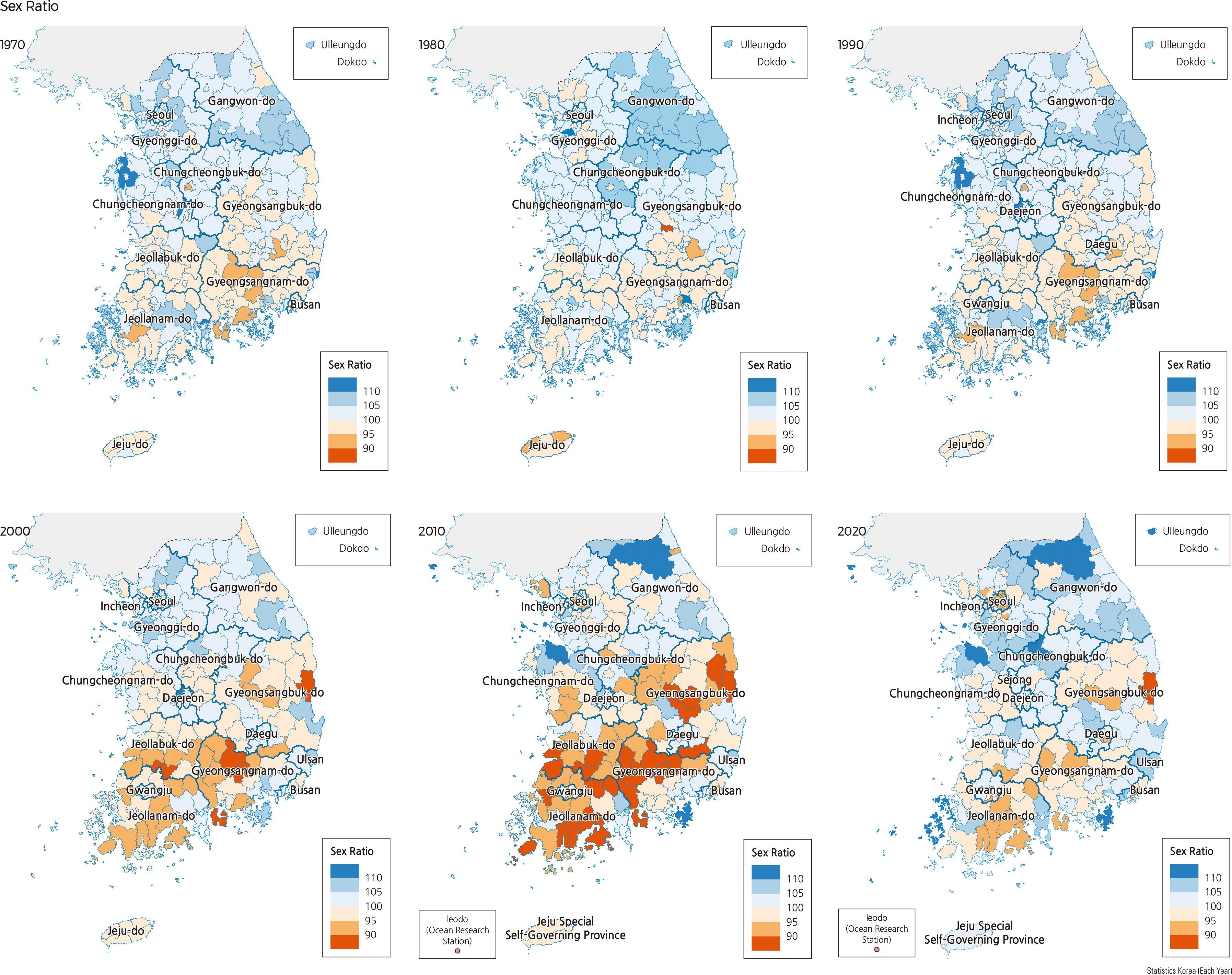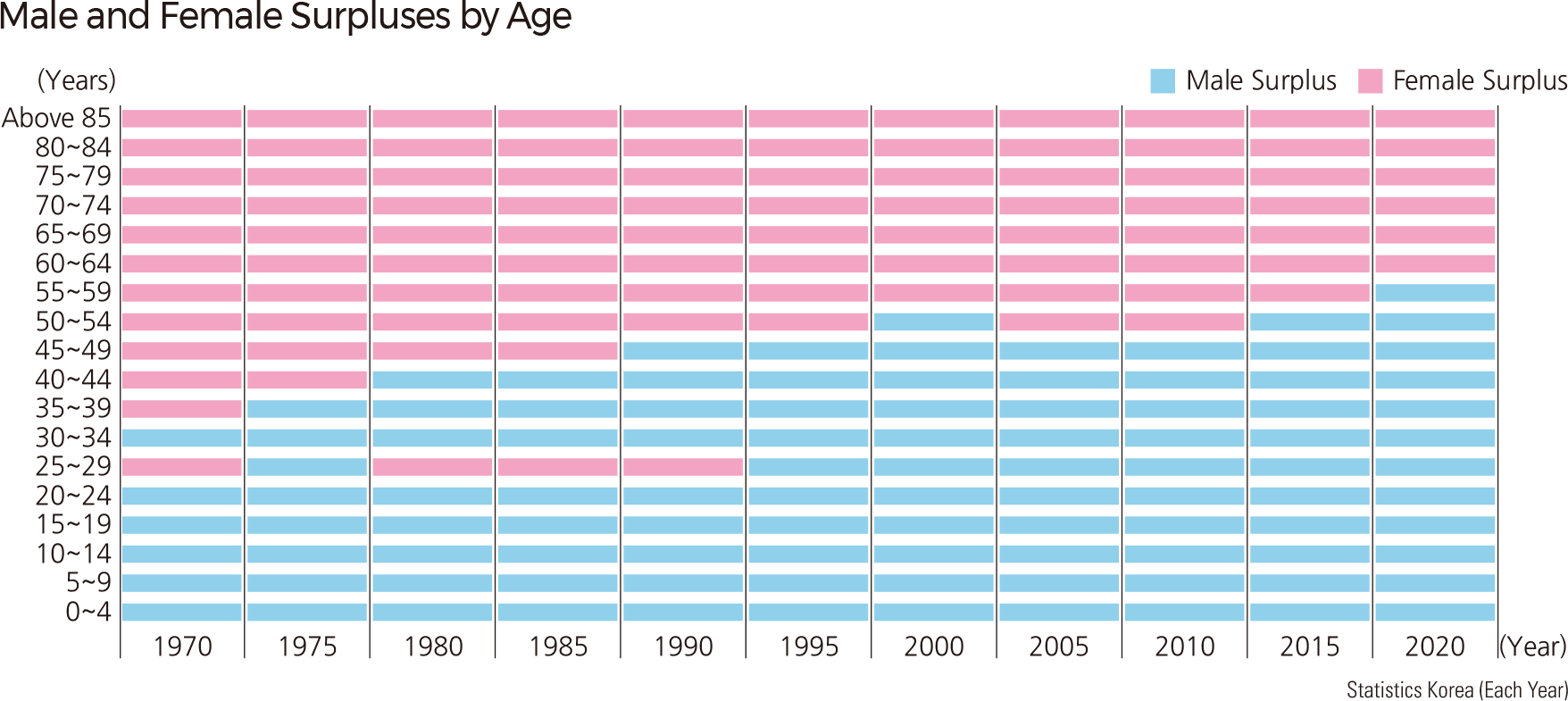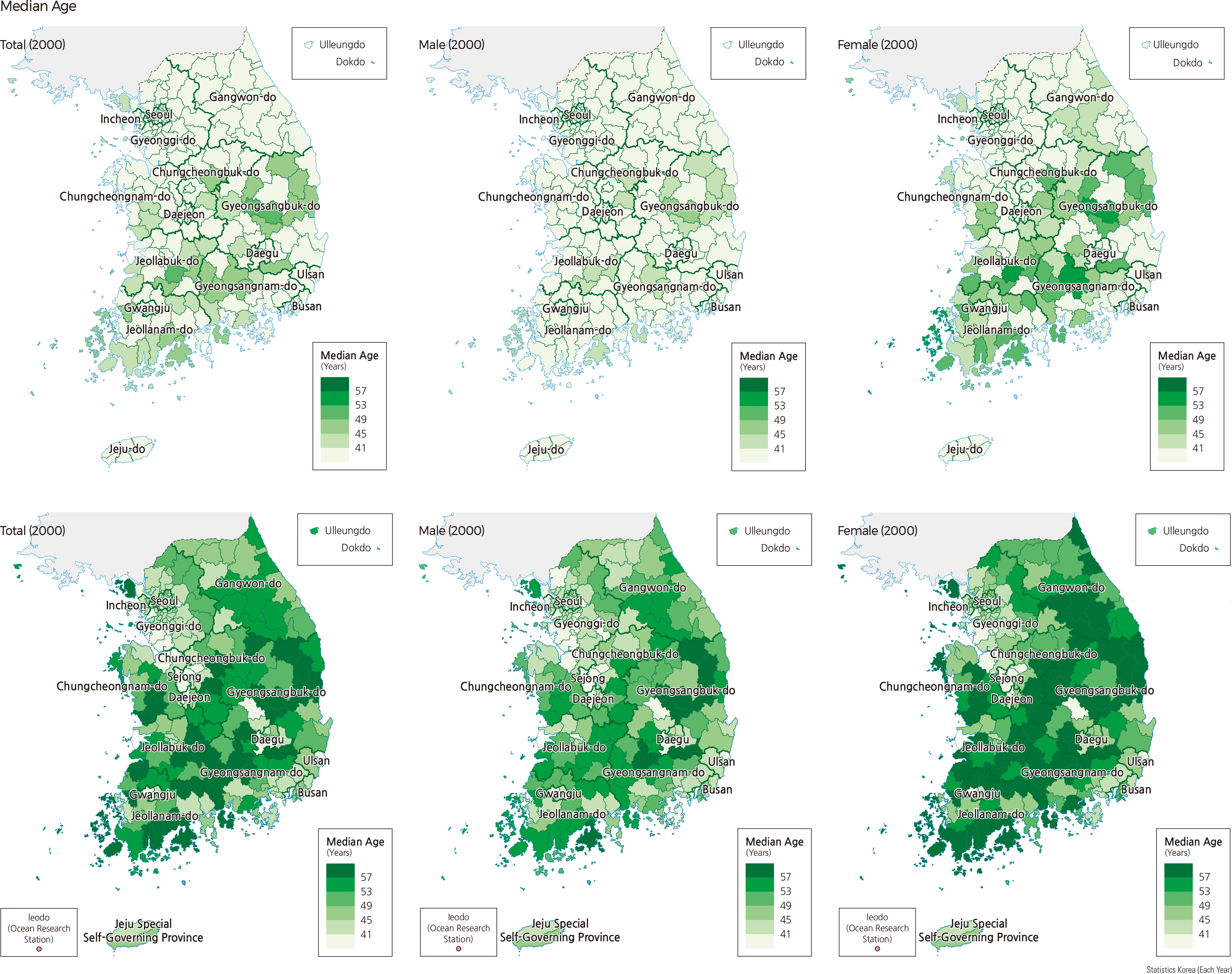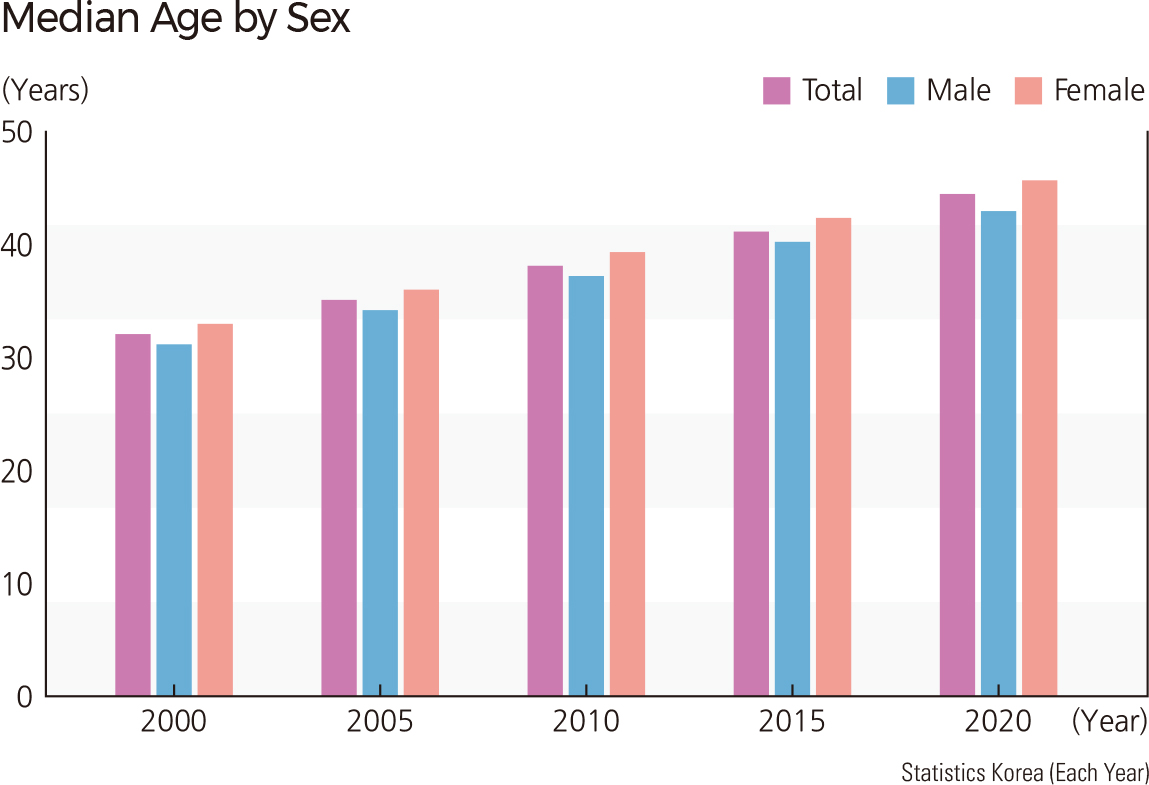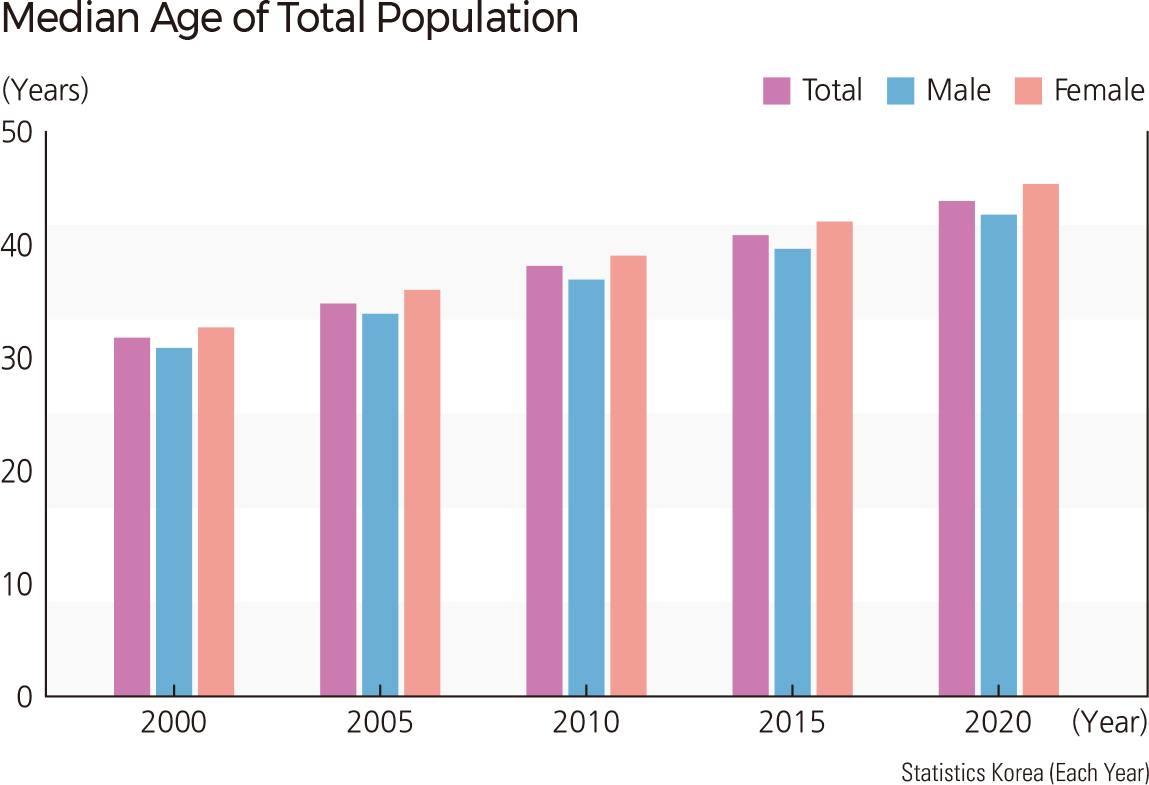English III 2021
The sex ratio, an indicator of the gender structure of the population, is determined by the number of men per 100 women (male population/female population x 100). Based on Korea’s total population with foreigners, the sex ratio has generally exceeded 100 in line with the preferences of males at birth, which means the male population is more than the female population. However, it gradually decreased after 1966 and reached 98.7 in 2010, showing a generally balanced tendency. In 2020, the sex ratio of the country was 100.6, which means the male population is slightly more than the female population. When examining maps at the -si/-gun/-gu areas, the sex ratio is high in some areas such as southern Gyeonggi-do, northern Chungcheongnam-do, northern Chungchengbuk-do, Ulsan, and Geoje-si, where industries are well developed due to industrial complex locations. In addition, a similar tendency in sex ratio can be observed in the border region of Gangwon-do. On the other hand, there are more women than men in rural areas of the Honam and Yeongnam regions, and the sex ratio is low in most areas of Seoul. A similar tendency of sex ratio is also found on the map at the level of metropolitan cities and provinces: Seoul, Busan, Daegu, Gwangju, and Jeollabuk-do have more women than men, and Seoul has the lowest sex ratio. On the other hand, the male population is higher in the other areas. For example, the highest sex ratios occur in Ulsan (106.6), Chungcheongnam-do (105.5), and Chungcheongbuk-do (104.5). Median age is the age that divides the population into two equal-sized groups. The median age of the total population with foreigners was similar until the mid-1960s (19 years old). Since then, the median age has continued to rise and appears to be about 44 years old in 2020, as the birth rate has decreased. In general, the median age of the female population is higher than that of males, and the gap continues to grow. The median age distribution at the -si/-gun/-gu areas is low in metropolitan cities and high in county-level administrative districts. The median age is also low in Gyeonggi-do and northern areas of Chungcheongnam-do and Chungcheongbuk-do, where young people are concentrated and engaged in productive activities in the industrial complexes. Most areas with a high median age generally correspond to areas at high risk of being depopulated. In particular, Uiseong-gun and Gunwi-gun in Gyeongsangbuk-do, Goheung-gun in Jeollanam-do, and Hapcheon-gun in Gyeongsangnam-do are those with a median age of 60 years or older. The higher median age of those areas could result from the decrease of the working-age population and youth population and the worsening of population aging. The median age is the lowest in Sejong (38 years old) and the highest in Jeollanam-do (48.8 years old). In addition, a relatively high median age can be found in Gyeongsangbuk-do, Jeollabuk-do, and Gyeongsangnam-do.
|
